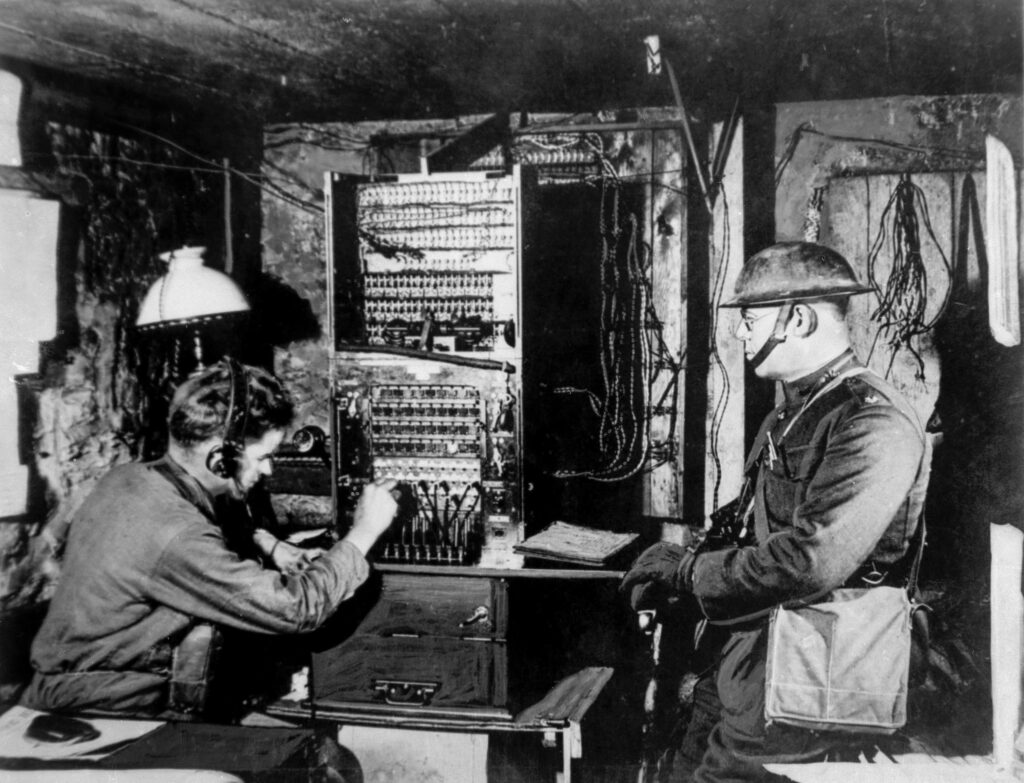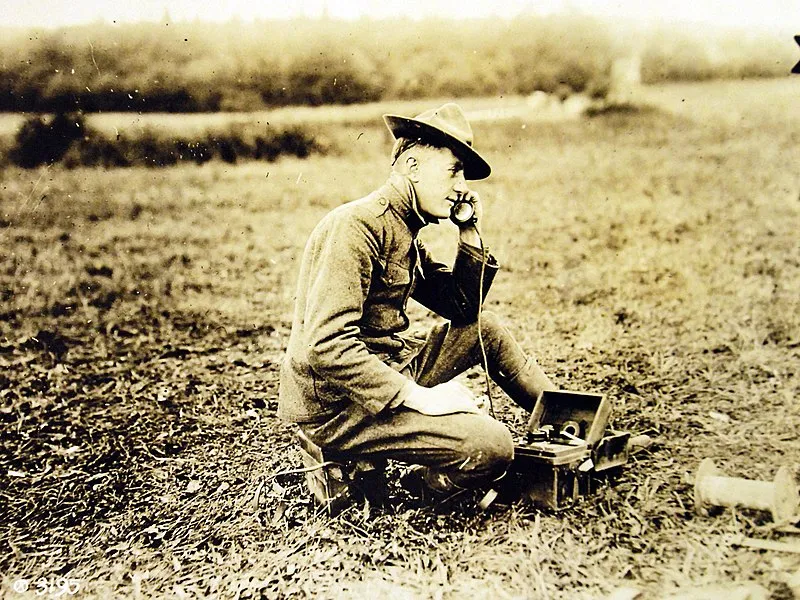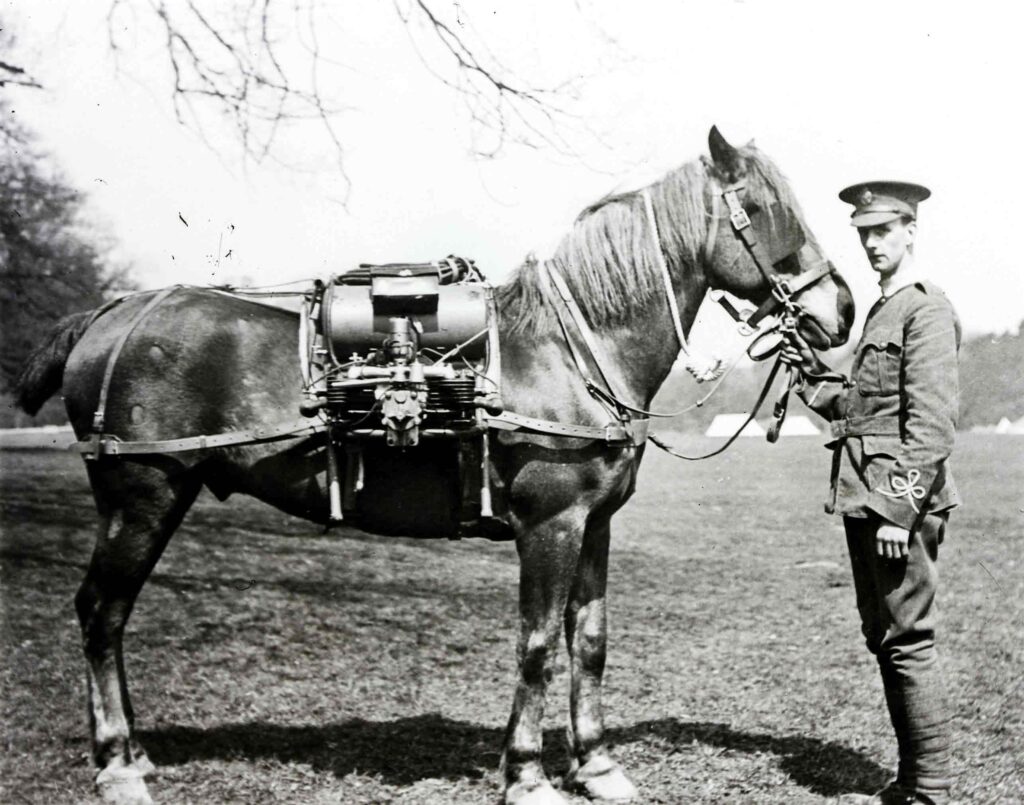Wartime Effects
Civilian radio activities were suspended during the war, as the radio industry was taken over by the government. Numerous military applications were developed, including direct communication with airplanes. The war also exposed thousands of service personnel to the on-going advances in radio technology, and even saw a few experiments with broadcasting entertainment to the troops.

WARTIME USAGE
The military importance of radio was immediately apparent. In August 1914, the Belgians had to completely destroy a major international communications station located near Brussels, in order to keep it from falling into the hands of the advancing German army. In 1916, René Milan told how merchant ship sailors in European waters who had access to radio receivers were able to obtain relatively complete and timely war news, based on announcements transmitted by the high-powered radio stations operated by the major powers, “while the rest of the world must be content with the meagre, delayed communications authorized by the censorship”.

CIVILIAN ACTIVITIES
During World War One, a Committee on Public Information, headed by George Creel, was formed to promote the United States war effort at home and abroad. In 1918, Donald Wilhelm recounted how the high-powered radio stations of the United States Navy were used for “broad-casting the truth and the light”, as provided “by the most powerful educational institution in the world, the Committee on Public Information”. In September, 1922, Popular Radio noted that the World War had been the first to include “Public Opinion as a major force” where “moral verdicts took on all the value of military decisions”, and the United States, with limited access to the international cables, had turned to radio for “reaching every country on the globe with the American message”.

BROADCASTING EXPERIMENTATION
While radio remained off-limits for the general public during the war, there were occasional hints of what lay ahead. Wireless Music for Wounded Soldiers from the April 1918 reviewed a short-range electrostatic induction system that could be used to entertain hospitalized soldiers with music and news. And between the cessation of hostilities in November, 1918, and the end of the civilian radio restrictions in 1919, there were scattered reports of military personnel firing up transmitters in order to broadcast entertainment to the troops. In addition, the May 7, 1919 Dallas Morning News reported that U.S.S. George Washington, during its transatlantic crossing, had employed its radio transmitter to provide nightly a Concert by Wireless for Vessels at Sea.
